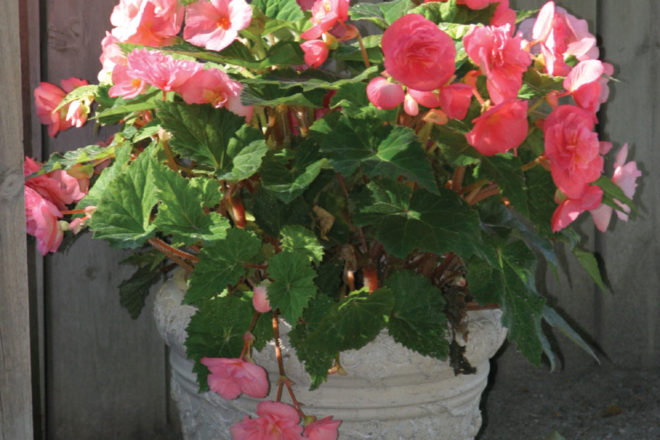Growing in Shady Places
- Share
- Tweet
- Pin
- Share

Those of us who have chosen Door County as our home for at least part of the year have done so because of the natural beauty and natural landscapes. We love the wild places, and we especially love the wooded areas. Many of the homes in the county are located on wooded lots or have many trees planted as part of the landscaping plan. These wooded areas are much of what makes this peninsula so beautiful, but in many cases they require the gardener to learn a bit about planting in the shade. If you have a shady spot that has caused frustration, leave the chainsaw in the garage a bit longer. Here are a few ideas to keep your trees and have attractive gardens.
The first step in working with shade in a garden is to be realistic. Trying to plant annuals that require full sun in an area that is partially shaded is like driving a square peg in a round hole; it just won’t work. Likewise, perennials that require lots of light or soils that periodically dry out will struggle in shady locations and never look quite right, if they survive at all. Many of the plants that will thrive in the shade are also some of the most forgiving perennials to raise, such as the many varieties of hosta or ferns.

Many perennial plants that produce abundant colorful blooms will not tolerate shady locations. Therefore, shady locations should be approached with a different aesthetic in mind. Think in terms of leaf colors and how their variations can create deep and lush color textures. If you absolutely must have some bright colors in the bed, incorporate shade-loving annuals such as tuberous begonias or impatients planted in tight groupings or in containers if the soils are poor. Bulbs and ephemerals may also add some color in the spring, and may find enough light under deciduous trees before they leaf out in the summer months.
Another consideration when working with shade must be soil drainage and tree roots. Tree roots will cause some difficulty when beginning a bed because they compete for moisture and nutrients, but these difficulties will diminish as plantings mature. Shallow roots may also make planting physically difficult. Adding soil to raise the bed or incorporating containers are possible remedies in extreme cases.
Though the shade garden will not produce an explosion of color, you may find, as I do, they can be the most pleasing gardens. Shade gardens are cool, refreshing places and the green hues are calming even on the hottest days of summer. In a well-planned shade garden, the shadowy and sheltered spaces produce a unique sense of quiet and retreat at any point in the growing season.


